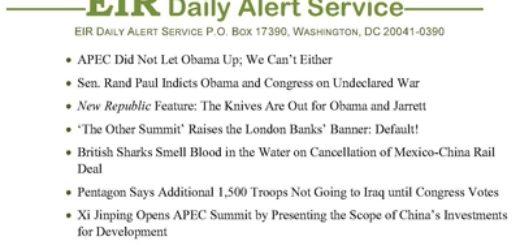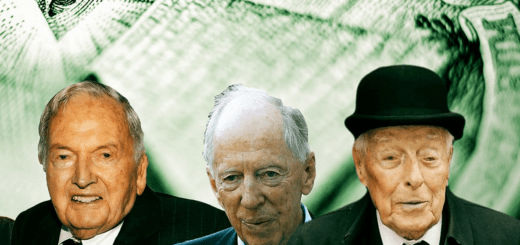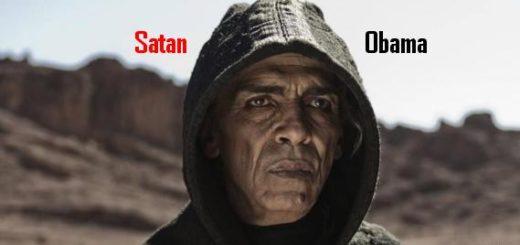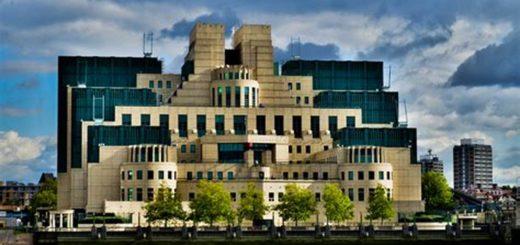EIR Daily Alert Service, FRIDAY, APRIL 19, 2019
| FRIDAY, APRIL 19, 2019 Volume 6, Number 77 EIR Daily Alert Service P.O. Box 17390, Washington, DC 20041-0390 |
- ‘Russiagate’ Defeated: Now Defeat the New McCarthyism. Let Trump Carry Out His Foreign Policy
- Great Power Cooperation? China’s Faster Growth Lifts U.S. Trade
- Great Power Cooperation? Russia Interferes in Aluminum Shortage
- Blame Bolton & Pompeo For Failed Trump-Kim Summit. Exposes Patrick Lawrence
- Switzerland Becomes Next European Country To Join Belt and Road
- Austrian National Bank Economist on New Silk Road
- Central Banks Thinking of Negative Rates Again-And Your Cash
- President Putin Lays Out Objectives For the Russian Space Program
- Two D.P.R.K. Test Firings Include Short-Range Missile, and U.S. Secretary of State
- Another China Contribution to the Shared Future of Mankind
EDITORIAL
‘Russiagate’ Defeated: Now Defeat the New McCarthyism, Let Trump Carry Out His Foreign Policy
April 18 (EIRNS)—Attorney General William Barr said at his press conference this morning that what Donald Trump faced at the beginning of his Presidency was unprecedented: attempting to form an administration, while his own intelligence community was investigating him as an agent of a foreign power. Perhaps Lincoln’s having to dodge British-assisted Confederate assassination attempts to get to his inauguration was worse; nothing else comes close. The British intelligence hand orchestrated both attacks.
To cite a report from Barbara Boyd on today’s release of the Mueller report, “When Donald Trump was informed by Jeff Sessions that a Special Counsel was being appointed, he said, according to Mueller’s report, ‘Oh my God. This is terrible. This is the end of my presidency. I’m f**ked…. Everyone tells me if you get one of these independent counsels it ruins your presidency…. It takes years and years, and I won’t be able to do anything. This is the worst thing that ever happened to me.’
“Perversely, this absolutely true statement by the President, borne out by months of an insane inquisition which crippled his ability to act, is cited by Mueller’s crew of biased prosecutors for the proposition that the President repeatedly skirted obstructing justice. Trump, on the other hand, has constantly referred to the obstruction charges hung over his head by RESIST Congress members, the bipartisan Washington, D.C. ‘establishment’ and intelligence community, and a controlled news media as a brake on his ability to fight back and communicate directly with the American people about what was happening to their Presidency and their Constitution.”
The President can now see his attorneys and the Justice Department begin to investigate the perpetrators, but the spotlight must fall on the British intelligence drive to entrap and stop or remove Trump led by Sir Richard Dearlove’s MI6 circles and “Five Eyes” collaborators.
Only then could the real traps of McCarthyism by which the President is still almost completely constrained, be attacked. His new American Moon-Mars mission; America’s industrial renewal and recovery of its heartland; his desired new infrastructure and science frontiers; his policy of great-power collaboration for the end of endless states of war: All these depend on the good, cooperative relationships with China’s Xi Jinping and Russia’s Vladimir Putin which Trump desired as candidate and President.
That has been made impossible through his Presidency thus far, and still is—until British intelligence’s new McCarthyism is defeated.
Simply “no collusion, no obstruction” won’t achieve this. In these respect to these crucial objectives, Trump’s Presidency will remain “f**ked” by British intelligence until it is defeated.
That can’t be done except by the leadership of Lyndon LaRouche’s movement, in his name. He was the British imperial system’s American adversary for 50 years, during which London controlled the key policies of American Presidents. LaRouche represented the American System of economics and the real America to many nations which otherwise saw British imperialism with American power. And he, with his “four economic laws” beginning with Glass-Steagall and Hamiltonian national banking, provided the economic and scientific policies to bring the United States into cooperation with other great powers for the benefit of humanity. Now, his exoneration—investigating and reversing the prosecutorial war against LaRouche which was overseen by the same Robert Mueller for the same British geopolitical power—uniquely will free up the American Presidency.
U.S. POLITICAL AND ECONOMIC
Great Power Cooperation? China’s Faster Growth Lifts U.S. Trade
April 18 (EIRNS)—China’s reaccelerating economic growth, combined with its performance of the commitments President Xi Jinping made to President Donald Trump at their 2018 summit in Buenos Aires, have “paused” what was a decline toward recession from Trump’s two years of industrial recovery. This is now the view of many U.S. economists and financial analysts—ironically, while some of the same economists claim the Chinese upswing is entirely caused by unsustainable government credit and won’t last, and still others say they don’t believe China’s figures!
Those data, released by the Commerce Ministry April 17, included first-quarter industrial production up by 6.5% from the same quarter of 2018 (compared to just 5.9% in the last quarter of 2018 from the last quarter of 2017). Retail sales were up 8.7% (compared to 8.1%); fixed asset investment up 6.3% (compared to 6.1%); property investment was up 11.8% (compared to 11.0%); surveyed unemployment was 5.2% (compared to 5.3%). The economy as a whole expanded by 6.4% (compared to 6.3%).
Along with the reaccelerated growth in China goes the prospect of a U.S.-China agreement on trade. China’s first-quarter exports also rose compared to the 2018 first quarter, but fell to the United States, by 3.6%. American exports to China rose 21%, from a big increase in semiconductors exports to soybean sales and aircraft. Consequently the U.S. trade deficit fell in January, and then dropped sharply in February, below $50 billion at $49.1 billion; and the trade deficit with China fell to $30.1 billion, nearly $8 billion below what it was running last summer and fall.
President Xi’s commitments to President Trump from Buenos Aires are clearly being carried out. This will save U.S. first-quarter GDP growth from falling below 2% annual rate. China’s export growth is coming from countries of the Belt and Road Initiative, while world trade as a whole actually fell in the period through January, according to data from the Netherlands Bureau for Economic Policy Analysis.
Reuters reported April 16 from “two sources familiar…” a story really not exclusive or new: The U.S. trade negotiations team has made significant concessions on the attempt to get China to stop industrial subsidies, and on the so-called enforcement mechanism, after China made legal changes regarding industrial property rights and joint-venture requirements. Thus an agreement has come nearer.
Still, a far cry from the world-changing economic collaboration potential of the Trump-Xi relationship.
Great Power Cooperation? Russia Interferes in Aluminum Shortage
April 18 (EIRNS)—Economists’ talk of yet another U.S. economic “recovery” from the threat of recession has been based on U.S.-China trade improvements and the prospect of a return toward zero interest rates; U.S. manufacturing, in particular, has been steadily sliding after two Trump years of relative rebound.
Russia’s latest interference—in the U.S. aluminum shortage—is opportune. It appears that the $200 million investment by Russian aluminum/alumina giant RUSAL in the new Ashland, Kentucky plant of Braidy Industries, giving it 40% ownership, is in addition to supplying aluminum of very high quality from a RUSAL plant under construction in Siberia. The Braidy plant, in turn, is exclusively to supply aluminum sheet to the auto industry, which needs it under conditions of developing shortage.
The RUSAL/Braidy deal comes after the so-called Midwest Aluminum Price in the United States had risen from $0.80/lb. to $1.00/lb. since the steel/aluminum tariffs were imposed in early 2017. Primary aluminum production had actually gone down to 750,000 tonnes annual rate from 850,000 tonnes in 2015-16; it was once nearly 5 million tonnes in the early-mid 1980s. A drop in auto production, larger than the recent gradual drop in auto sales, is connected to this.
Last October, at a campaign rally at Eastern Kentucky University, President Trump said: “Thanks to our job creation and economic (policies), Braidy Industries recently broke ground on a billion-dollar aluminum mill that will create up to 1,500 jobs right next to Ashland, Kentucky. You know where we’re talking about?” The rallygoers did. But Braidy, with some aid from the state, has struggled to build the $1.6 billion project. In February Braidy sought an $800 million loan from the Department of Energy. It has been trying to capitalize the mill with a stock share raise, but has repeatedly announced and then postponed it.
The Trump Administration removed sanctions on RUSAL in January, despite a resolution opposing this having passed the House and nearly passing the Senate. The investment initiative for Ashland evidently came from RUSAL, very recently, and the investment will be documented only later this quarter. Though RUSAL supplies some aluminum to the United States otherwise, this supply is definitely new, coming from a newly-built RUSAL plant. Braidy Industries CEO Matt Bouchard said “The bottom line is that without RUSAL we could not build an environmentally-conscious mill of this scale. Low cost, high quality and low carbon is the future of aluminum.”
Interesting, with the two Presidents unable to meet without a wild McCarthyite outcry.
Blame Bolton and Pompeo for Failed Trump-Kim Summit, Exposes Patrick Lawrence
April 18 (EIRNS)—The “failure” of President Donald Trump’s Hanoi summit with North Korean Chairman Kim Jong Un rests squarely on the “all or nothing” proposals which Secretary of State Mike Pompeo and National Security Advisor John Bolton pushed Trump to put to North Korean Chairman Kim in Hanoi, international analyst Patrick Lawrence demonstrates in his April 16 article “Trump & the Bolton-Pompeo Axis” in Consortium News.
On April 11, South Korean President Moon Jae-in came to Washington to meet with President Trump and save the talks by dropping the “all-or-nothing big deal” Bolton and Pompeo had persuaded the President to present to North Korean Chairman Kim. Before they met, Trump announced that he is willing to meet with Kim for a third time, and also announced, “There are various smaller deals that could happen,” Lawrence reported. Moon calls it “action for action.” Lawrence explains that this strategy is widely accepted in the East as the only path that would lead to sustainable denuclearization.
In North Korea, Kim reacted to these events when he addressed the Supreme People’s Assembly April 12, saying, “I am willing to accept [a third summit] … on condition that it has a right attitude and seeks a solution that we can share.”
According to Lawrence, there is now little question the American side was responsible for the failure in Hanoi, where President Trump handed Kim a sheet of paper listing terms in Korean and English which Reuters’ Leslie Broughton and David Brunnstrom termed, “a blunt call for the transfer of Pyongyang’s nuclear weapons and bomb fuel to the United States,” Lawrence reports. “The document appeared to represent Bolton’s long-held and hardline ‘Libya model’ of denuclearization that North Korea has rejected repeatedly,” he quotes Reuters’ March 29 exclusive.
Lawrence also quotes Jenny Town, a North Korea specialist from Washington’s Stimson Center, who told Reuters: “This is what Bolton wanted from the beginning and it clearly wasn’t going to work.”
THE NEW GLOBAL ECONOMIC ORDER
Switzerland Becomes Next European Country To Join Belt and Road
April 18 (EIRNS)—RT reports that Switzerland has become the “fourth European country” to join China’s ambitious global trade infrastructure project, the Belt and Road Initiative (BRI). The Swiss Finance Ministry announced that President Ueli Maurer is planning to sign a deal on cooperation with China under the New Silk Road project during his eight-day visit to Beijing beginning on April 22.
Maurer, who is also Finance Minister, is expected to attend the Second Belt and Road Forum for International Cooperation next week in the Chinese capital. According to the Swiss Finance Ministry, the potential deal will strengthen trade and economic ties between the countries, promoting investment into minor infrastructure enterprises under the broader project led by China. “The aim of the memorandum is for both parties to intensify cooperation on trade, investment and project financing in third markets along the routes of the BRI, based on a catalogue of basic principles for cooperation and in line with international standards and legislation in the countries concerned,” a ministry source said, and although providing no details, the reference to “third markets” looks promising.
Switzerland is going to join the growing list of Schengen-area states to sign up with the BRI. In March, Italy agreed to officially support cooperation with China in the framework of the multibillion-dollar project. Rome faced strong disapproval from France, Germany, and the United States. European financial center Luxembourg also joined the BRI in March. Last year, Portugal and Greece signed a memorandum on cooperation with China under the New Silk Road project, and Austria is also collaborating.
Austrian National Bank Economist on New Silk Road
April 18 (EIRNS)—In a five-page interview with the Austrian monthly Diplomacy & Commerce, which includes two maps, Stephan Barisitz, senior economist at the Austrian National Bank, gives an objective and rather detailed introduction to the Belt and Road Initiative—also known as the New Silk Road—and its potentials. He points out that the main beneficiaries so far from the strategy have been China’s neighbors in Asia: Pakistan, Australia, Bangladesh, Indonesia, plus Russia. Priority on China’s agenda, however, also includes “strategically smaller states” such as Djibouti, Laos, Kyrgyzstan, Uganda, Montenegro, observes Barisitz.
As for Russia, Europe could contribute with substantial investments in Trans-Eurasian connectivity, for instance the Moscow-Kazan high-speed rail route as part of the major Beijing-Duisburg Trans-Eurasian Magistral; the giant Yamal LNG complex, where China is already investing $12 billion, Barisitz says.
Austria can benefit immensely from its economic-geographic position at three main transport routes of the New Silk Road, Barisitz points out: the Piraeus-Vienna land-sea express route; the development of Trieste into an important BRI seaport with links to the Austrian region of Carinthia and on to the rest of northern Europe; the Kosice-Bratislava-Vienna broad-gauge project as an extension of the Trans-Siberian Rail route.
COLLAPSING WESTERN FINANCIAL SYSTEM
Central Banks Thinking of Negative Rates Again—And Your Cash
April 18 (EIRNS)—The Italian news website “Imola Oggi” has published an article on central banks’ reaction to a new financial crash threat, which takes off from an April 16 EIR Strategic Alert item by Claudio Celani. The article begins, “An International Monetary Fund staff study published in February suggests that financial authorities will soon devalue cash to save the financial system from an imminent crash. The report, titled ‘Monetary Policy with Negative Interest Rates: Decoupling Cash from Electronic Money,’ proposes to depress physical money to allow a wide margin for negative rates [from central banks]. This is obviously not a good sign, comments the U.S. news agency EIR….”
The Federal Reserve, European Central Bank and Bank of Japan have all gone back to variations of QE and/or have stopped raising rates. Another indication that they are now thinking of a return to ZIRP (zero interest-rate policy) or below to try to aid major banks survive a sharp economic decline, is heard from former Treasury Secretary Lawrence Summers. Speaking in Washington on April 15, Summers praised the Federal Reserve’s decision to stop both raising rates and tapering its QE, but went further to urge that the Fed’s next move should be to lower interest rates. He also urged the Fed and Treasury to come up with some sort of game-plan should the downturn require cutting interest rates to zero once again. “Planning for greater Treasury-Fed cooperation in the event that we have another zero lower bound episode is something that I think should be part of the Fed’s contingency planning,” Summers said, reported Bloomberg.
As the IMF was caught considering by EIR, and the Bank of England has been studying for some time, the wholesale withdrawal of cash from banks under a negative interest rate regime, could be prevented by introducing government-controlled electronic currencies in place of cash, which somehow, by government decree, would magically not be devalued by negative interest rates. Hocus-pocus aside, the IMF’s and BOE’s studying it shows zero or negative rates are looming again in central banks’ plans.
The sane answer, posed in the EIR piece and affirmed by Imola Oggi, is to restore Glass-Steagall bank regulation. This will break up the system of speculation threatening another financial crash.
SCIENCE AND INFRASTRUCTURE
President Putin Lays Out Objectives for the Russian Space Program
April 18 (EIRNS)—In a meeting with his Security Council on April 16, Russian President Vladimir Putin gave a candid assessment of where improvements had to be made in the space enterprise, set specific goals, and stressed the importance of Russia’s leadership in space.
Putin reiterated a primary task, which he has focused on since coming into office, which is the reorganization and modernization of the space industry, which was almost destroyed during the preceding IMF decade, when the post-Soviet countries and Eastern Europe were viciously looted under “free market” dictate. During the 1990s, many top scientists and managers left Russia, and resources did not exist to replace them. What is needed, Putin said, is “the recruitment of skilled specialists…. Over a period of the past few years, we have implemented a number of measures to attract young professionals into companies, R&D centers and design bureaus…. It is necessary to continue attracting and retaining talented industry specialists who can implement even the boldest projects.”
Lyndon LaRouche pointed out the fact that Russia, and the Soviet Union before it, was largely unable to apply new technology developed through the space program in the economy, which slowed down the increase in productivity that the U.S. experienced through the Apollo program. Putin said, “We have to learn to efficiently implement the results of space activities in every sphere of life, including in primary industries, such as telecommunications, communications, transport, medicine, housing, and public utilities.”
To do this, Putin reported, Russia must upgrade its on-orbit capabilities. “The national system of satellite communications, optical and radiolocation imaging of the Earth, and the collection of meteorological data are inferior to our competitors,” he stated, which also bears on the question of the export of Russian services, including rocket launches, and hardware, such as satellites. “Increasing export is a task of fundamental importance,” he said. When U.S. companies start taking crews to the ISS, Russia will lose the $85 million per seat it has recently been charging NASA. Developing an export market, to continue to bring in funds that support the Russian space industry, is a critical necessity.
President Putin has set ambitious goals, including doubling of productive capacity in the rocket and space industry in 2020, as compared with 2011. And upgrading all of Russian aerospace so it can compete with the other established, and the emerging, space powers.
STRATEGIC WAR DANGER
Two D.P.R.K. Test Firings Include Short-Range Missile, and U.S. Secretary of State
April 18 (EIRNS)—The North Korean news agency KCNA reported that the government test-fired a guided missile, which appears to be a short-range, non-ballistic type, and thus not to violate Kim Jong Un’s pledge of a ballistic missile testing moratorium. KCNA quoted Kim on the firing: “The development of the weapon system serves as an event of very weighty significance in increasing the combat power of the People’s Army.”
At the same time the D.P.R.K. also test-fired U.S. Secretary of State Mike Pompeo. “Whenever Pompeo pokes his nose in, talks between the two countries go wrong without any results even from the point close to success,” KCNA quoted Kwon Jong Gun, director general of the Foreign Ministry’s department for American affairs, speaking to the first session of the 14th Supreme People’s Assembly. “I am afraid that, if Pompeo engages in the talks again, the table will be lousy once again and the talks will become entangled,” he said. “Therefore, even in the case of a possible resumption of the dialogue with the U.S., I wish our dialogue counterpart would be not Pompeo but someone who is more careful and mature in communicating with us.”
Kwon filled out the picture with remarks on relations between President Trump and Kim, making it obvious the above on Pompeo came from the top: “It is fortunate that the personal relationship between our Chairman of the State Affairs Commission and President Trump is on good terms as usual, and our Chairman is pleased to get on well with President Trump.”
OTHER
Another China Contribution to the Shared Future of Mankind
April 18 (EIRNS)—China has made another contribution to the shared future of mankind, which is perhaps the fruit of the Memorandum of Understanding with Italy on the Belt and Road Initiative or New Silk Road. The Central Academy of Fine Arts (CAFA), in cooperation with the Italian Embassy in Beijing, is using digitalization to present all Leonardo’s oils, murals and drawings in a single exhibit.
CGTN-TV reported yesterday: “Leonardo Da Vinci is one of the greatest painters of all times. 500 years after his death, various commemorative events are taking place around the world. Here in Beijing, the Central Academy of the Fine Arts Museum is working with the Italian Embassy to present an exhibition called ‘The Art of Leonardo: Opera Omnia.’ ”
“The Last Supper, Mona Lisa, and many of Da Vinci’s other art works receive a huge number of visitors in different museums every day. But, have you ever imagined seeing all of them at one time? Here at the Central Academy of Fine Arts Museum, digital acquisition and reproduction technology have made it possible….
“ ‘It’s impossible for any of us to see all of them at the same time, and even the paintings themselves have never appeared under the same roof, as they were created by the artist in different places,’ said Franco Amadei, Cultural Counselor of the Italian Embassy in China. ‘So for scholars who might have already studied the originals, this exhibition provides them an irreplaceable chance to make comparisons and study the development of Da Vinci’s works. It’s also a rare opportunity for other art fans who might not be able to visit all the 11 museums [where Da Vinci’s works are] to worship these art pieces.’ ”
“The Art of Leonardo: Opera Omnia” will be at the CAFA Museum in Beijing through May 23, and a page on the CAFA website displays the artworks in the exhibition in high definition.
| Reach us at eirdailyalert@larouchepub.com or call 1-571-293-0935 |













